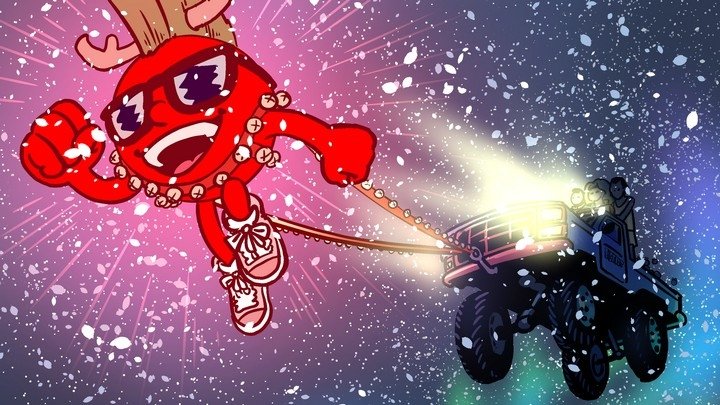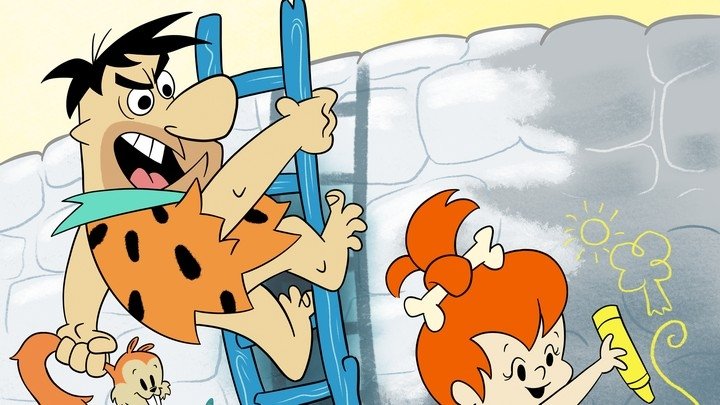What games like Lost Sphear get wrong about Chrono Trigger
Keep it simple, stupid.
IGN asked me to review Lost Sphear, the second game from Square Enix's boutique development studio, Tokyo RPG Factory. The game is OK, but not as good as I'd hoped. Much like its predecessor I am Setsuna, Lost Sphear aspires to recapture the good feelings and nostalgia of classic 16-bit RPGs, specifically Chrono Trigger. A laudable goal, but unfortunately Lost Sphear flies wide of the mark.
In fairness, it feels like every game to attempt to recapture Chrono Trigger's spark has fallen short. We've seen many attempts through the years, ranging from the ambitious (Ion Storm's Anachronox) to the misaimed (Studio Archcraft's well-meaning by joyless Black Sigil for DS). Lost Sphear simply continues of a longstanding tradition of game developers loving Chrono Trigger so much they want to make their own version of the game, while somehow failing to grasp precisely what it was about the game they loved so much.
For one thing, there's a certain degree of folly in daring to match Chrono Trigger in the first place. That 1995 classic remains a wholly unique work for the simple fact that it represents two masters of the role-playing craft collaborating at the top of their game. It was overseen by Final Fantasy's Hironobu Sakaguchi and Dragon Quest's Yuji Horii, fresh from working on what were arguably their greatest works ever (Dragon Quest V and Final Fantasy VI). It's the Raiders of the Lost Ark of video games: An unparalleled joint venture. Lost Sphear, then, would be the equivalent of Kingdom of the Crystal Skulls — passable, but definitely not on the level of the work it builds on.

Lost Sphear comes across as being almost gluttonous in its attempt to recreate vintage RPG nostalgia. As I mentioned in my review, the game doesn't just mimic Chrono Trigger. It also throws in optional mechanical power suits a la Xenogears. It involves the mystical restoration of lost fragments of the world, similar to Dragon Quest VII. The weird ultimate shape of the player's combat party feels like a bundle of clichés from every classic RPG imaginable, from a Tifa (Final Fantasy VII) proxy to a powerful enemy leader (Suikoden, among others) to a character who is basically just the Winter Soldier, no bones about it. Areas throughout the world will remind you of the ship graveyard in Final Fantasy V, the cities of Vector and Thamasa in Final Fantasy VI, and the poisoned village in Dragon Quest IV. You get the impression that if it was in an RPG beloved by someone at Tokyo RPG Factory, it was fair game for inclusion here.
To its credit, Lost Sphear definitely grew on me as I played. I found it painfully tedious at the outset, but by game's end, I genuinely liked most of the cast, enjoyed the battle system, and even found value in the party's mechanical Vulcosuits. Yet at no time did Lost Sphear ever properly gel into the beloved neo-masterpiece its creators intended. It walks carefully within the footprints of giants, and as such it leaves no real impression of its own. But most of all to its own detriment, Lost Spear tries to walk in the footprints of a great many giants all at once. You'll find a ridiculous number of systems ticking away under its hood — too many, in fact.
Positional battles with timed hits. Mechanical combat suits. Fishing. Foraging. Crafting spells. Modifying spells with hand-crafted secondary effects. Providing ingredients for food recipes. Building structures that add global combat modifiers. And more! That's a lot of stuff to cram into any one game, and Lost Sphear's workings could fuel a full-length 80-hour RPG epic. That the game clocks in at about 25% of that length means the whole thing feels overstuffed, and its systems never receive a proper workout. Consider Vulcosuits: When you activate them in battle, every action they take costs "Vulcopoints," a shared pool of energy (similar to the magic meter in Skies of Arcadia — yeah, another classic RPG riff, surprise surprise) that you can't easily refill in the field until the final third of the game. Because the suits are so costly and difficult to refuel, you almost never use them in battle until late in the game, at which point you lose access to them for a critical section of the adventure. You can't shake the impression that the game almost wants to punish you for wanting to make use of its systems — a strange and offputting design choice.
This "pile it on and hope something works despite itself" approach to game design is where Lost Sphear couldn't be more dissimilar from Chrono Trigger. It's what pretty much everyone gets wrong in their efforts to imitate Trigger, really: The desire to add in lots of complex systems in the drive to create a sensation of strategic depth and leave the impression that there are many interesting things to do in the game. Yet Trigger worked specifically because it lacked overly complex systems and didn't waste people's time with busywork.

Indeed, Chrono Trigger has remarkably spartan underpinnings by modern standards. Its three-person combat system draws from seven characters, max, and each character learns exactly eight unique combat skills throughout the course of the adventure. You'll find only a handful of superfluous collectibles and secrets scattered around the world. Instead, Chrono Trigger builds its complexity and replay value by maximizing a tiny handful of features. Each character can combine their skills with other party members for combination attacks, with unique abilities emerging from each pairing (or, in some cases, trio) of heroes. Every single party formation unlocks a different set of capabilities, each with different elemental and positional attributes to give you cause to consider switching up your roster for the needs of a given area or boss encounter. Because these combination attacks build on your characters' eight intrinsic skills, you don't have to learn new, specialized information or deal with alternate energy sources to get the most out of them. You simply need to make optimal use of the semi-real-time battle system and understand your party's unique combination powers. It's simple, elegant, and painless, yet the combo tech gives the game boundless replay value and strategic flexibility.
In short, Chrono Trigger took a clean, elegant approach to the RPG that no imitator has ever matched. Its sidequests all revolved around interesting, self-contained, time-travel-based story goals rather than gathering loot or wandering around performing fetch quests. And even though Chrono Trigger ultimately turns out to be a fairly brief game, it doesn't feel slight. The story doesn't overstay its welcome, and you're encouraged to replay the game in pursuit of alternate endings with the aid of all the levels, skills, and gears you accumulated along the way. It remains to this day one of the cleanest, smartest RPGs ever designed.
Lost Sphear, on the other hand… isn't. It's perfectly fine, but the game trips over itself in its eagerness to remind you of all the cool stuff you loved in other, better games. It lacks the confidence in itself and in its systems to let those elements stand on their own strengths. I see the germ of a potentially great game in Lost Sphear, but it ends up being choked out by its creators' seeming desperation to latch onto the great games of the past. Like an overwritten novel, Lost Sphear's mechanics really needed another round of editing to strip away the excess and polish up the parts that do work. It does feel more fully realized than I am Setsuna, though. Maybe Tokyo RPG Factory's next effort will finally hit the mark.




